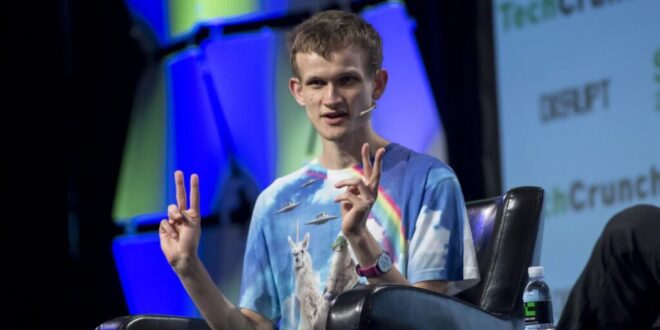By: Olivier Acuña Barba •
Published: 03 Jun 2025 • 22:12
• 5 minutes read
The purpose of crypto and blockchain is more than speculation and hype. Credits: ETN| Credits: @ETN
Cryptocurrency can be viewed as a volatile investment tool for those who are tech-savvy or driven by investor greed. Under the hype, however, lies a deeper, quieter purpose: Crypto as a force of social impact and human good.
Blockchain technology has revolutionised the way philanthropy is done. From feeding the hungry, to helping girls, women and their families with education, financial inclusion and empowerment, to empowering those who are marginalised, it delivers aid with unprecedented efficiency and transparency.
Crypto’s potential goes beyond profits. Projects such as Apex Fusion, Electroneum and others have shown that it can be used to help the most vulnerable in the world. Digital identities are also being leveraged to improve aid to crisis zones like refugee centers.
Recent reports reveal that there are approximately 1.4 billion people in the world. unbanked people globally. Over 1.1 billion live in acute Multidimensional poverty. Nearly 123 millions are displaced worldwide.
The amount of money that is donated is staggering, but it’s also blind. According to official statistics, up to $1.5 billion is given away annually. donated annually worldwide. But only 80% reaches the people who are in dire need. The trust in NGOs is very low. Transparency in NGOs is very low.
Crypto profits turned into hope
Vitalik Buterin is the co-founder and CEO of Ethereum. donated Over $1.2 billion for India’s relief COVID in a single go in 2021. He has turned his total $13 billion donations into hope for the millions of people who have received them.
Buterin responded to the many memecoins that creators had sent him by saying, “Anything you send to my wallet is donated.” In 2024 he said, “Crypto is not just about markets. It can change lives.” This led to a wave in blockchain-based donations that proved even meme coins could fuel meaningful change.
Staking a claim for a better future
Apex Fusion, an innovator in Web3, is redefining the way cryptocurrency can create change. Apex Fusion, a Web3 innovator, is redefining how cryptocurrency can drive change.
Christopher Greenwood, director of the program, said: “We are not here just to make money.” told HackerNoon. “Proof of Stake is a powerful tool that can change lives.”
In March 2025 the initiative funded Ammucare to provide 2,050 meal for India’s poorest community. In the month following, it funded World Tribal Alliance to plant fruit-bearing tree in South Africa as a sustainable way to fight hunger.
Greenwood emphasized that “every cent, less minimal costs, goes to charities.” It is transparent, on-chain tracked, and regenerative.” Apex Fusion leverages blockchain’s transparency to show donors exactly where their contributions are going, building trust in an area often plagued with skepticism.

Empowering those who are not banked
Electroneum has been creating opportunities for unbanked people through its AnyTask Platform since its creation eight years ago. AnyTask allows freelancers from underserved areas to earn ETN by enabling them to work without having a bank.
Electroneum’s blockchain has been enhanced via the Aurelius update. Smart contracts, EVM compatibility with dApps and the Istanbul Byzantine fault tolerance consensus, along with reputable validaters, have all been added to ensure high scalability and low costs, as well as lightning-fast finality. It has increased its transparency of key metrics in real-time for greater trustworthiness. This makes it the perfect fit for its ongoing charitable work.
Partnerships with non-profit organizations UBUNTU PathwaysUBUNTU’s report states that the, which is active from 2023 onwards, have had a transformative effect in South Africa. They funded education and health care for 1,200 South African families while reducing costs of aid delivery by 30%.
Electroneum’s Work extends to NGOs Such as the Wonder Foundation or Moinho Brazil support long-term programs and initiatives aimed at empowering thousands of girls and woman. Electroneum’s spokesperson confirmed to X that “we’re still empowering NGOs”. The spokesperson highlighted how AnyTask transactions based on blockchain ensure low-cost, fast aid delivery.
This initiative empowers individuals to break the poverty cycle, and crypto’s potential to be a tool to change systemic systems as it guides recipients from beginning to end.

Blockchain for Non-profits: Transparency and Efficiency
There are many other non-profits that use blockchain technology. The United Nations World Food Programme (WFP). has pioneered Building Blocks is a blockchain-based project launched by the Jordanian Azraq and Zaatari Refugee Camps to help with humanitarian aid.
WFP allows refugees to purchase basic items without bank accounts and paper vouchers using EyePay, a private blockchain based on Ethereum. According to WIRED, this system has been operational since 2017 and has cut financial transaction costs by 98%. This results in a monthly saving of $150,000 for Jordan alone.
Transparency of blockchain allows for every transaction to be tracked, reducing fraud while increasing donor confidence. Similarly, UNICEF’s Cryptocurrency FundIn 2019, launched by Atix Labs & StaTwig in collaboration with other startups, such as StaTwig and Atix Labs to increase global aid delivery.
Digital Identities: A game-changer for refugees
Blockchain is being used to transform digital identity, especially in the case of refugees. It is being implemented. widely experimented UN Refugee Agency. Over 1 billion people lack formal identification which prevents them from accessing essential services such as healthcare, education and financial aid.
Blockchain-based IDs are a safe and secure solution. Building Blocks from the WFP uses Ethereum for refugee transactions and links iris scanning to digital wallets.
It allows displaced people to receive aid without having to present physical documents which are often lost in crisis situations. The World Economic Forum notes These platforms are “a transparent infrastructure which governments and NGOs could adopt” and can be scaled from local solutions to global ones.
In Jordan, refugees utilise EyePay Transparency and efficiency are ensured by recording transactions on a private Blockchain. This approach empowers individuals and reduces bureaucratic delay, making aid more efficient.

Other noteworthy projects
Many other crypto initiatives make waves in humanitarian assistance. The Giving Block is a platform that facilitates crypto donations. It has onboarded non-profits such as Save the Children. They began accepting Bitcoin back in 2013, and now support multiple cryptocurrencies.
In 2023, the Giving Block reported The transparency of blockchains helped non-profits to deliver aid quicker during crises such as natural catastrophes.
Mercy Corps, an other leader, uses stablecoins to offer loans The project will provide financial inclusion to Kenyan rural farmers without traditional banking infrastructure. These projects highlight blockchain’s ability bypass intermediaries to ensure that aid reaches the people in need without any overhead.
The challenges and the way forward
Crypto philanthropy is not without its challenges, despite the promise it holds. The volatility of the crypto-philanthropic sector, as demonstrated by Buterin’s Shiba Inu contribution, can lead to funding instability if it is not carefully managed. Regulation is also an issue, and NGOs are urged to work with regulators to avoid misuse such as the bypassing of sanctions.
Yet, the benefits—transparency, efficiency, and accessibility—far outweigh the hurdles. As blockchain technology develops, its integration of smart contracts and digital identifications will further streamline the aid delivery process, especially in refugee camps where speed and trust is critical.
New era of giving
Crypto is showing its heartbeat for humanity. From Buterin’s transformational donations to WFP digital IDs to Apex Fusion’s Regenerative Staking, crypto has proven to be a lifeblood of humanity. These initiatives aren’t chasing clout—they’re forging a world where blockchain lifts the forgotten, one transparent block at a time.
As more innovators and NGOs join the movement, the legacy of cryptocurrency won’t be defined by market capitalization but by lives transformed, proving that in a volatile, digital realm, hope can still be the currency.
 Costa News Spain Breaking News | English News in Spain.
Costa News Spain Breaking News | English News in Spain.





